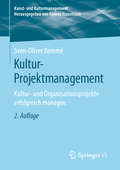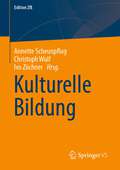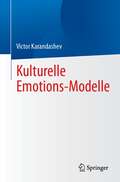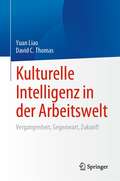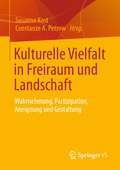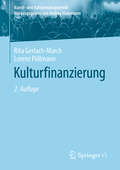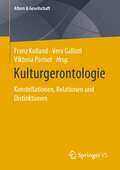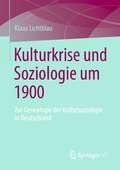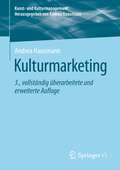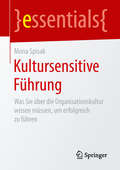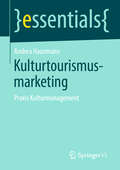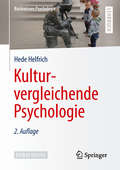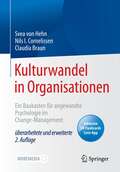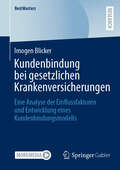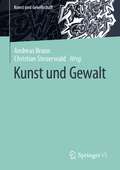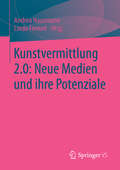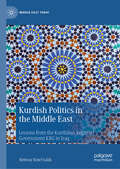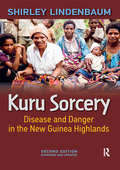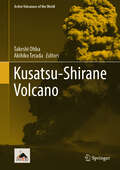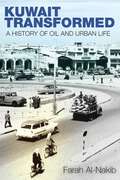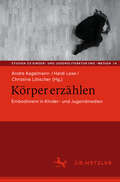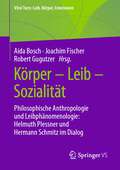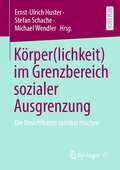- Table View
- List View
Kultur-Projektmanagement: Kultur- und Organisationsprojekte erfolgreich managen (Kunst- und Kulturmanagement)
by Sven-Oliver BemméDas Buch beschreibt Potenziale, Chancen, Nutzen, aber auch Risiken und Grenzen der Projektmanagement-Arbeit im Kulturzusammenhang. Es versteht sich als ein hinleitendes Methoden-Grundlagenwerk und dient der Einführung in die Hintergründe, Verfahrensweisen und Handlungsmöglichkeiten, die sich aus der bewussten Anwendung von Projektmanagement-Methodik im Kulturbetrieb ableiten. Zusätzlich zu Gesamteinordnung und Anwendbarkeit in der Kulturorganisation, bietet das Buch praktische Umsetzungshinweise für die Organisationshandelnden und gibt Beispiele aus dem kulturellen Projektalltag. Neben Rüst- und Handwerkszeug für die Management-Praxis werden organisations- und persönlichkeitsbezogene Voraussetzungen sowie Möglichkeiten der Kompetenzerweiterung aufgezeigt. Exkurse zu Organisationsentwicklung, kontinuierlichem Change-Management sowie Teamführung und Evaluation verdeutlichen den notwendigen Vernetzungsgrad von Organisation, Prozessen und den sie tragenden Akteuren. Denn für die Projektarbeit und deren Management gilt in Profit- wie Non-Profit-Organisationen gleichermaßen: Es sind die Menschen, die den Unterschied machen.
Kulturelle Bildung (Edition ZfE #12)
by Christoph Wulf Ivo Züchner Annette ScheunpflugDas Buch vereinigt die Ergebnisse aktueller theoretischer und empirischer Forschung zur kulturellen Bildung. Untersucht werden zentrale Sparten wie bildende Kunst, Tanz, Musik, Museum und weite Formen kulturellen Engagements sowie unterschiedliche Zielgruppen, wie Schülerinnen und Schüler, Erwachsene, Lehrkräfte und Professionelle aus kunstbezogenen Berufen.
Kulturelle Emotions-Modelle
by Victor KarandashevDieses Buch bietet einen multidisziplinären Überblick über kulturelle Modelle von Emotionen, mit besonderem Augenmerk darauf, wie kulturelle Parameter von Gesellschaften das Gefühlsleben von Menschen in unterschiedlichen kulturellen Kontexten beeinflussen. Es geht über die traditionelle Dichotomie des West-Ost-Vergleichs und damit verbundene Kulturparameter wie Individualismus-Kollektivismus und Machtdistanz hinaus und untersucht auch viele andere kulturelle Dimensionen, die in der Mainstream-Forschung weniger Beachtung gefunden haben.Zu den behandelten Themen gehören:· Grundlegende emotionale Prozesse in kulturellen Kontexten· Kulturelle Komplexität von Emotionen· Kulturelle Werte des Überlebens und der Selbstdarstellung· Gesichtsausdruck von Emotionen in verschiedenen KulturenCultural Models of Emotion" ist ein umfassender Überblick über die internationalen Perspektiven der kulturübergreifenden Erforschung von Emotionen und eine nützliche Quelle für Forscher in den Bereichen Anthropologie, Soziologie, Psychologie und Kommunikationswissenschaften.
Kulturelle Intelligenz in der Arbeitswelt: Vergangenheit, Gegenwart, Zukunft
by David C. Thomas Yuan LiaoDieses Buch bietet einen umfassenden Überblick über die theoretische Entwicklung und empirische Untersuchung des Konzepts der kulturellen Intelligenz. Ein Überblick über frühere Arbeiten zur interkulturellen Kompetenz bildet den historischen Hintergrund, vor dem die beiden wichtigsten Theorien zur kulturellen Intelligenz vorgestellt werden. Diese beiden Ansätze sowie die aus ihnen abgeleiteten Beurteilungen werden verglichen und bewertet. Fragen im Zusammenhang mit der Messung kultureller Intelligenz werden eingehend untersucht. Ein wichtiges Merkmal des Überblicks über die empirischen Arbeiten zur kulturellen Intelligenz besteht darin, dass die Ergebnisse im Hinblick auf die Beziehung zwischen den vier Unterdimensionen der Skala der kulturellen Intelligenz (CQS) diskutiert werden und dass auch Ergebnisse unter Verwendung der Kurzform der Skala der kulturellen Intelligenz (SFCQ) und anderer Maße für das Konzept einbezogen werden. Der Überblick über die empirische Arbeit umfasst Studien, die kulturelle Intelligenz als Vorläufer, als abhängige Variable, als Moderator und als Mediator betrachten. Kulturelle Intelligenz auf Gruppen- und Organisationsebene wird ebenfalls diskutiert. Schließlich bildet dieser Überblick die Grundlage für eine Diskussion über geeignete künftige Richtungen bei der Untersuchung der kulturellen Intelligenz. Für Wissenschaftler der Organisationspsychologie, die sich für das Konzept der kulturellen Intelligenz interessieren, ist dieses Buch ein unverzichtbarer Leitfaden.
Kulturelle Vielfalt in Freiraum und Landschaft: Wahrnehmung, Partizipation, Aneignung und Gestaltung
by Susanne Kost Constanze A. PetrowKulturelle Vielfalt in Freiraum und Landschaft in ihrer Komplexität zu erfassen bedeutet, Räume von unterschiedlichen sozialen Gruppen und Milieus, von Werten, Praktiken und Lebensweisen her zu denken. Freiräume und Landschaften werden dabei ebenso als Schauplatz wie Produkt sozialen Handelns verstanden. Zugleich werden die kulturellen Ordnungen des Raumes und die damit verbundenen Machtverhältnisse hinterfragt.In Städten und Metropolregionen haben die Globalisierungsprozesse und Migrationsbewegungen der vergangenen Jahrzehnte zu einer neuen kulturellen Vielfalt geführt. Menschen unterschiedlicher Sozialisation nutzen öffentliche Freiräume gemeinsam, aber nicht immer auf die gleiche Weise. In Praktiken, Artefakten, Diskursen und Subjektivierungen werden Kultur und somit Raum- und Identitätskonstruktionen sichtbar.An der Schnittstelle zwischen Theorie und Praxis widmen sich die Autorinnen und Autoren dieses Bandes unterschiedlichen Dimensionen von Vielfalt in Stadt und Landschaft. Aus der Planung kommend fragen sie sowohl nach Aspekten der Wahrnehmung, Nutzung, Aneignung und Gestaltung von städtischen Freiräumen und Kulturlandschaften als auch nach den Chancen, Herausforderungen und Konflikten, die aus der kulturellen Vielfalt für die Freiraum- und Landschaftsplanung erwachsen.
Kulturfinanzierung (Kunst- und Kulturmanagement)
by Lorenz Pöllmann Rita Gerlach-MarchDieses Lehrbuch stellt Finanzierungsformen für Kulturbetriebe vor, ohne die Bereiche Staat, Markt und gemeinnütziger Sektor kategorisch zu trennen, da sie einander durchdringen und Kulturschaffende Grenzgänger zwischen diesen Welten sind. Nach einer theoretischen Einführung werden externe Finanzierungsquellen, öffentliche und private Mittel sowie neue Formen der „gemischten" Kulturfinanzierung beleuchtet, worauf von den Kulturinstitutionen selbst erwirtschaftete Einnahmen folgen. Sie werden jeweils kurz eingeführt und aktuell praxisorientiert illustriert. Dabei liegt das Augenmerk auf besonders innovativen Finanzierungsmodellen, und erfolgreiche Beispiele werden als „best practice" detailliert beschrieben.
Kulturgerontologie: Konstellationen, Relationen und Distinktionen (Altern & Gesellschaft)
by Franz Kolland Vera Gallistl Viktoria ParisotStudien unter dem Vorzeichen der Kulturgerontologie verstehen das Alter nicht als eine biologisch definierte Lebensphase, sondern als Teil sozialer Praxis und kultureller Ordnung. Die interdisziplinäre Annäherung an die Lebensphase Alter passiert dabei vor dem Hintergrund von Praxistheorien, Diskurstheorien, Materialitätstheorien oder Kulturtheorien. Empirisch geht mit dieser Neuausrichtung eine Erforschung des Alltagsnahen und Lebensweltlichen, des impliziten Wissens, der sozio-materiellen Arrangements und der Ästhetisierungen des Alterns einher. Der Band bildet die Vervielfältigung und Synthese von disziplinären Perspektiven der Kulturgerontologie im deutschsprachigen Raum ab und zeigt damit neue Wege auf, die Lebensphase Alter zu gestalten.
Kulturkrise und Soziologie um 1900: Zur Genealogie der Kultursoziologie in Deutschland
by Klaus LichtblauDieses Buch hat die Entstehung der Kultursoziologie in Deutschland im Zeitraum von 1887 bis 1933 zum Gegenstand. Ausgehend von der um 1900 weit verbreiteten Kulturkritik im deutschen Sprachraum wird zum einen die Bedeutung der Nietzsche-Rezeption und der Auseinandersetzung mit der ästhetisch-literarischen Moderne für die frühe deutsche Soziologie aufgezeigt. Die Konfrontation mit der modernen Geschlechterfrage und der Krise der Wissenschaft sind weitere Schwerpunkte der vorliegenden Abhandlung. Ausführlich behandelt werden dabei die entsprechenden Arbeiten von Ferdinand Tönnies, Georg Simmel, Max Weber, Werner Sombart, Max Scheler und Karl Mannheim.
Kulturmarketing (Kunst- und Kulturmanagement)
by Andrea HausmannMarketing für Angebote im Kulturbereich ist nicht "give the market what it wants". Vielmehr ist Kulturmarketing eine professionelle Betrachtungsweise des Vermittelns kultureller Leistungen an verschiedene Zielgruppen. Dabei gibt es zwei Vorgehensweisen: eine durch Nachfrage getriebene und - weitaus wichtiger - eine von künstlerischen und anderen Impulsen getriebene. In beiden Fällen geht es um das Erzeugen von Akzeptanz bei den relevanten Adressaten, insbesondere den Besuchern. Kulturmarketing wird im vorliegenden Band als betriebswirtschaftlich fundierte Konzeption mit ihren Zielsetzungen, den wichtigsten Strategieoptionen und ausgewählten Facetten des Marketinginstrumentariums behandelt.
Kultursensitive Führung: Was Sie über die Organisationskultur wissen müssen, um erfolgreich zu führen (essentials)
by Mona SpisakMona Spisak gibt Ihnen in diesem essential das Wissensrüstzeug, mit dem Sie Ihre Organisationskultur verstehen, sich in ihr geschickt positionieren und erfolgreich handeln. Sie erhalten Impulse, um Wege zur Veränderung und Innovation subtil zu erschließen. Wenn Sie ein „gutes Händchen“ für die Kultur in Ihrer Organisation haben, ist Ihnen der Führungserfolg fast garantiert! Allerdings dürfen Sie nicht der Illusion verfallen, die Kultur in Ihrer Organisation, Ihrem Team oder Ihrer Abteilung „zurechtbiegen“ zu können, so wie es Ihnen beliebt.
Kulturtourismusmarketing: Praxis Kulturmanagement (essentials)
by Andrea HausmannDieses essential erläutert kenntnisreich die wichtigsten Entscheidungen, die in der Praxis des Kulturtourismusmarketing zu treffen sind. Nach einer Einführung in den Begriff und die zentralen Merkmale werden die Aktivitätsschwerpunkte im Planungsprozess des kulturtouristischen Marketing vorgestellt. Hierauf aufbauend beschreibt Andrea Hausmann besonders praxisrelevante Marketingstrategien, die sich mit den unterschiedlichen Typen der kulturtouristischen Nachfrage (Segmentierung), der Markenführung (Branding), der Realisierung von Innovationen (Digitalisierung) und dem Eingehen von Kooperationen bzw. der Bildung von Netzwerken befassen. Abschließend werden typische Schwerpunkte im Marketing-Mix kulturtouristischer Leistungsträger beleuchtet und es wird die Bedeutung des Personals für das Qualitätserleben der Nachfrage herausgearbeitet.Die Autorin:Prof. Dr. Andrea Hausmann ist Professorin am Institut für Kulturmanagement der Pädagogischen Hochschule Ludwigsburg. Sie berät Kulturbetriebe und Tourismusorganisationen in den Themen Kulturtourismus, Marketing und Personal.
Kulturvergleichende Psychologie (Basiswissen Psychologie)
by Hede HelfrichWas ist Kultur? Sind die Menschen in Indien anders als in Deutschland - und wenn ja, warum? Worauf begründen sich diese Unterschiede und lassen sie sich messen? Mit diesen Fragen befasst sich innerhalb der Psychologie eine ganze Teildisziplin, die sich zur Aufgabe gemacht hat, das Verhältnis von Mensch und Kultur zu beforschen. Schon die Unschärfe des Kulturbegriffs lässt dabei Schwierigkeiten erahnen. Dieses Buch führt in klarer, verständlicher Form in die Themen der Kulturpsychologie bzw. kulturvergleichenden Psychologie ein. Dabei werden die unterschiedlichen Ansichten des Faches verdeutlicht, erläutert und ausführlich diskutiert, so dass dem Leser die eigene Meinungsbildung ermöglicht wird.
Kulturwandel in Organisationen: Ein Baukasten für angewandte Psychologie im Change-Management
by Nils I. Cornelissen Claudia Braun Svea von HehnKulturveränderung in vier Schritten! Dieses Fachbuch bietet Ihnen konkrete Werkzeuge für die vier iterativen Phasen eines Kulturwandels, u.a. wie durch viralen Change großflächige Veränderung in kurzer Zeit passiert und veranschaulicht die Techniken mit praxisnahen Fallbeispielen aus der Unternehmenswelt. Es bringt die hierfür wichtigsten Erkenntnisse aus der angewandten Psychologie auf den Punkt. Die Autoren verknüpfen auf verständliche Weise praktische Handlungsanleitungen aus ihrer jahrzehntelangen Beratungserfahrung mit den Erkenntnissen der Verhaltensökonomie und der Neurowissenschaften. Dazu sind Fragen und Antworten zum Selbsttest über die Flashcard App inkludiert. Der Inhalt • Konkrete Werkzeuge für die vier iterativen Phasen eines Kulturwandels, u.a. wie Vorbilder geschaffen werden und Change Stories überzeugender sein können• Praxisnahe Fallbeispiele aus der Unternehmenswelt, u.a. zu Wandel durch Digitalisierung • Fundiertes Hintergrundwissen zu Verhaltens- und Einstellungsänderung, u.a. zu Willenskraft (Willpower) und Gewohnheitsänderungen, Mindsets und Sinnhaftigkeit (Purpose) als Veränderungstreiber• Fünf grundlegende Designprinzipien, u.a. was IKEA-Regalaufbauen mit Wandel zu tun hat• Tipps für Akteure des Kulturwandels, wie sie mittels emotionaler Intelligenz und Achtsamkeit Resilienz stärken und Veränderung auch gegen Widerstände meistern• Hilfreiche Didaktik durch Zusammenfassungen, Checklisten der Erfolgsfaktoren, Hintergrund-, Reflexions- und Übungsboxen Die Zielgruppen Führungskräfte, Organisationsentwickler, Personaler und Berater in Startups, im Mittelstand und in größeren Unternehmen sowie öffentlichen Organisationen Die Autoren Dr. Svea von Hehn arbeitet seit 1999 international als Managementberaterin (u.a. für McKinsey). Sie ist diplomierte, promovierte Psychologin, mehrfach zertifizierter systemischer Coach (u.a. für Search Inside Yourself, Google’s Achtsamkeitsprogramm) und Partnerin bei RETURN ON MEANING. Nils I. Cornelissen arbeitet seit 2003 international als Managementberater (u.a. für McKinsey). Er ist Diplom-Kommunikationswirt und hat einen Master in Psychologie und Soziologie. Er ist zertifizierter Coach sowie Facilitator und Partner bei RETURN ON MEANING. Claudia Braun arbeitet seit 2007 international als Managementberaterin (u.a. für McKinsey). Sie ist Diplom-Betriebswirtin in internationaler BWL, hat einen Master of Public Administration, einen Master of Public Policy sowie diverse Zertifizierungen z.B. als systemischer Coach und MBSR-Trainerin. Sie ist Partnerin bei RETURN ON MEANING.
Kundenbindung bei gesetzlichen Krankenversicherungen: Eine Analyse der Einflussfaktoren und Entwicklung eines Kundenbindungsmodells (BestMasters)
by Imogen BlickerImogen Blicker analysiert in diesem Buch die Schlüsselfaktoren, die die Kundenbindung bei gesetzlichen Krankenversicherungen (GKV) beeinflussen. Vor dem Hintergrund eines zunehmend wettbewerbsintensiven und digitalisierten Gesundheitsmarktes untersucht sie, welche psychologischen, sozialen und situativen Einflussgrößen für Versicherte wirklich entscheidend sind. Auf Basis einer umfassenden Literaturrecherche und qualitativer Experteninterviews entwickelt die Autorin ein praxisorientiertes Kundenbindungsmodell, das speziell auf die Besonderheiten gesetzlicher Krankenkassen zugeschnitten ist. Die Arbeit bietet nicht nur wissenschaftliche Erkenntnisse, sondern auch konkrete Handlungsempfehlungen für ein zukunftsfähiges Kundenmanagement – ein Muss für Entscheider*innen im Gesundheitswesen, Marketingverantwortliche und Berater*innen der Versicherungsbranche.
Kunst und Gewalt (Kunst und Gesellschaft)
by Andreas Braun Christian SteuerwaldDas Buch untersucht den bisher nur unzureichend untersuchten Zusammenhang von Kunst und Gewalt. Mit theoretischen, empirischen und methodischen Beiträgen von Gewalt- und Kunstsoziolog:Innen richtet sich das Buch nicht nur an ein soziologisches Fachpublikum, sondern zugleich auch an eine breite sowohl an Kunst als auch Gewalt interessierte Öffentlichkeit.
Kunstvermittlung 2.0: Neue Medien und ihre Potenziale
by Andrea Hausmann and Linda FrenzelDie Neuen Medien eröffnen vielfältige Chancen für die Vermittlungsarbeit in Museen, Ausstellungshäusern und anderen Kultureinrichtungen. Vor allem ermöglichen sie eine verbesserte, direkte Einbeziehung der Besucher in die Inhalte. Die Auseinandersetzung mit Kunst wird so zu einem spannenden, partizipativen und interaktiven Erlebnis. Es ist Ziel dieses Buchs, die Potenziale der Neuen Medien für die Vermittlungsarbeit in Kunst und Kultur fundiert zu untersuchen und im Hinblick auf die Gewinnung, Entwicklung und Bindung von Besuchern praxisnah zu beleuchten.
Kurdish Identity, Discourse, and New Media
by Jaffer SheyholislamiInformed by the interdisciplinary approach of Critical Discourse Analysis (CDA) and theories of identity, nation, and media, this study investigates the ways Kurds, the world's largest stateless nation, use satellite television and Internet to construct their identities. This book examines the complex interrelationships between ethno-national identities, discourses, and new media. Not only does this book offer the first study of discursive constructions of Kurdish identity in the new media,this book is also the first CDA-informed comparative study of the contents of the two media. The study pushes the boundaries of the growing area of studies of identity, nationalism and transnationalism, discourse studies, minority language, and digital media.
Kurdish Politics in the Middle East: Lessons from the Kurdistan Regional Government KRG in Iraq (Middle East Today)
by Rebwar Rawf SalihThis book, operating within the domain of political sociology, undertakes a comprehensive examination of the Kurdistan Regional Government's (KRG) internal challenges. It centres on the erosion of trust within the KRG's governance structures and its diminishing influence vis-à-vis the central government in Baghdad. Pivoting on the contemporary era of the region, marked by the US invasion of Iraq, the chapters provide an empirically rigorous chronological account of Kurdish influence on the Iraqi political landscape up until the pivotal 2017 independence referendum. The book analyses the complex array of factors contributing to the KRG's perceived failures, offering valuable insights and lessons that may be gleaned from these developments, and meticulously dissects the intricate interplay of political, economic, and military dynamics that have shaped the KRG's trajectory. Salih unravels the paradox of Kurdish leaders and political parties, seemingly engaged in self-defeating actions, yet retaining their positions of power and influence. Drawing on established sociological methodologies, the book presents an in-depth exploration of the motivations and mechanisms underpinning these enigmatic behaviours. Providing readers with a comprehensive exploration of Kurdish politics within a broader regional context, the book invites readers to engage with its analytical rigour, offering a scholarly lens through which to assess the KRG's intricate challenges and opportunities for the future.
Kuru Sorcery: Disease and Danger in the New Guinea Highlands
by Shirley LindenbaumPerhaps the best-documented epidemic in the history of medicine, kuru has been studied for more than fifty years by international investigators from medicine and the human sciences. This significantly revised edition of the landmark anthropological classic Kuru Sorcery brings up to date the anthropological contribution to understanding disease, the medical research that resulted in two medical Nobel Prizes, and the views of the Fore people who endured the epidemic and who still believe that sorcerers, rather than cannibalism, caused kuru. The kuru epidemic serves as a prism through which to see how Fore notions of disease causation bring into single focus their views about the body, the world of social and spiritual relations, and changes in economic and political conditions-aspects of thought and behaviour that Western medicine keeps separate.
Kusatsu-Shirane Volcano (Active Volcanoes of the World)
by Takeshi Ohba Akihiko TeradaThis volume presents a comprehensive overview of Mt. Kusatsu-Shirane, one of the most active volcanoes in Japan in terms of persistent release of volatile as volcanic gas and hot springs. The unexpected eruption of Kusatsu-Shirane volcano on January 23, 2018, caused human damages. It shed light on the difficulty of the prediction of phreatic eruptions, whereas motivated studies on schemes for volcano monitoring, research and disaster mitigation of the dormant volcanoes. This book includes the past and on-going research on the Kusatsu-Shirane volcano with varieties of disciplines such as seismology, geodesy, geomagnetism, geochemistry, petrology, and social science research on reporting of the eruption in 2018.
Kuwait Transformed: A History of Oil and Urban Life
by Farah Al-NakibAs the first Gulf city to experience oil urbanization, Kuwait City's transformation in the mid-twentieth century inaugurated a now-familiar regional narrative: a small traditional town of mudbrick courtyard houses and plentiful foot traffic transformed into a modern city with marble-fronted buildings, vast suburbs, and wide highways. In Kuwait Transformed, Farah Al-Nakib connects the city's past and present, from its settlement in 1716 to the twenty-first century, through the bridge of oil discovery. She traces the relationships between the urban landscape, patterns and practices of everyday life, and social behaviors and relations in Kuwait. The history that emerges reveals how decades of urban planning, suburbanization, and privatization have eroded an open, tolerant society and given rise to the insularity, xenophobia, and divisiveness that characterize Kuwaiti social relations today. The book makes a call for a restoration of the city that modern planning eliminated. But this is not simply a case of nostalgia for a lost landscape, lifestyle, or community. It is a claim for a "right to the city"--the right of all inhabitants to shape and use the spaces of their city to meet their own needs and desires.
Körper erzählen: Embodiment in Kinder- und Jugendmedien (Studien zu Kinder- und Jugendliteratur und -medien #14)
by Christine Lötscher Andre Kagelmann Heidi LexeKörper und Körperlichkeit werden auf vielfältige Art und Weise in Kinder- und Jugendmedien narrativiert, inszeniert und (re-)präsentiert: Das Spektrum reicht von sexualmoralischen (Selbst-)Beschränkungen der Kinderliteratur über die Vielfalt der Körperentdeckung in Aufklärungsbüchern, über Tabuisierungen und Normierungen von Sexualität und deren emanzipatorischer Infragestellung bis hin zu adoleszenten Normtransgressionen. Erweitert wird diese Variationsbreite in der All-Age-Literatur und in der Fantastik durch Figurationen toter oder untoter Körper sowie durch auf den Körper fokussierte Mensch-Tier-Beziehungen. In vier Abteilungen versammelt der Band Beiträge, die Körperdiskurse in unterschiedlichen Genres der Kinder- und Jugendliteratur sowie im Kinder- und Jugendtheater analysieren. Der Körper wird dabei im Kontext von Normierungen, De-Kategorisierungen und Performanzen, von Einschreibungen, Markierungen und Entgrenzungen, im Kontext von Kollektiven, Sozionarrativen und Transformationsprozessen sowie von Sexualisierung, Gewalt und (Un-)Doing Gender befragt. Dabei werden der erzählte Körper und der darstellende, respektive erzählende Bild- und Textkörper stets in Bezugnahme aufeinander befragt, sodass die Verschränkung literarästhetischer Aspekte mit der Vielfalt des (medialen) Embodiment sichtbar gemacht wird.
Körper – Leib – Sozialität: Philosophische Anthropologie und Leibphänomenologie: Helmuth Plessner und Hermann Schmitz im Dialog (Vital Turn: Leib, Körper, Emotionen)
by Joachim Fischer Robert Gugutzer Aida BoschDas Buch möchte die theoretischen Ansätze von Helmuth Plessner und Hermann Schmitz in den Dialog bringen und für die soziologische Forschung fruchtbar machen. Entfaltet werden anthropologisch-phänomenologische Perspektiven auf Wechselwirkungen, Konflikte, Überschneidungen. Ergänzend dazu wurden weitere Artikel eingeworben, die mit dem gleichen theoretischen Fokus eine breite thematische Vielfalt abdecken. Gemeinsam ist den Beiträgen des Bandes eine intensive Auseinandersetzung sowohl mit Plessner als auch mit Schmitz.
Körper(lichkeit) im Grenzbereich sozialer Ausgrenzung: Die Unsichtbaren sichtbar machen
by Michael Wendler Ernst-Ulrich Huster Stefan SchacheDie Zahl derjenigen nimmt zu, die vom Sozialstaat nur noch unzureichend unterstützt werden. Die Wahrnehmung angebotener Hilfestellung und Begleitung ist bedingt durch das Selbstbild, das u.a. vom Körperbild und Fähigkeitskonzept der Einzelnen abhängig ist. Die Zuwendung zum körperbezogenen Handeln trägt der Tatsache Rechnung, dass sich die Konstituierung sozialer Wirklichkeiten immer auch über den Körper realisiert und den Körper im Rahmen dieser Gestaltungsprozesse verändert und modelliert. Der vorliegende Sammelband bietet theoretische Grundlegungen, einen Theorie-Praxis-Transfer und auch konkrete Beispiele einer gelingenden Praxis, wie sozial unsichtbar gemachte Kinder und Jugendliche durch körperbezogene Selbstwirksamkeitserfahrungen zu Selbstwert und in die Gesellschaft zurück geführt werden können.
Körpergewicht und sozioökonomischer Status: Quantitative Analysen des kausalen Effekts von hohem Gewicht auf den sozioökonomischen Status (Sozialstrukturanalyse)
by Judith LehmannDie letzten Jahrzehnte waren geprägt von der Vorstellung einer Übergewichts-Epidemie. Sowohl bei Kindern als auch bei Erwachsenen in Deutschland ist hohes Körpergewicht immer verbreiteter. Dieses Buch beschäftigt sich mit der Frage, ob Körpergewicht eine Determinante von sozialer Ungleichheit in Deutschland ist, indem betrachtet wird, ob Adipositas im Erwachsenenalter zu Einbußen im sozioökonomischen Status führt. Im Zentrum der Arbeit stehen quantitative Kausalanalysen mit Längsschnitt-Daten des Robert Koch-Instituts und dem Sozio-Ökonomischen Panel. Körpergewicht wird hier nicht nur über den Body Mass Index abgebildet, sondern auch über den Taillenumfang. Als Grundlage für die Analysen wird ein theoretisches Erklärungsmodell erstellt, für das verschiedene soziologische Theorieansätze auf die Fragestellung bezogen werden. Dabei sind neben Überlegungen zu Stigmatisierung und Diskriminierung auch Vorstellungen zu Körper als Kapital zentral. Die Ergebnisse werden im Hinblick auf Limitationen in der Datenlage in Deutschland diskutiert und Anknüpfungspunkte für weitere Forschung zu Körpergewicht als Determinante von sozialer Ungleichheit präsentiert.
